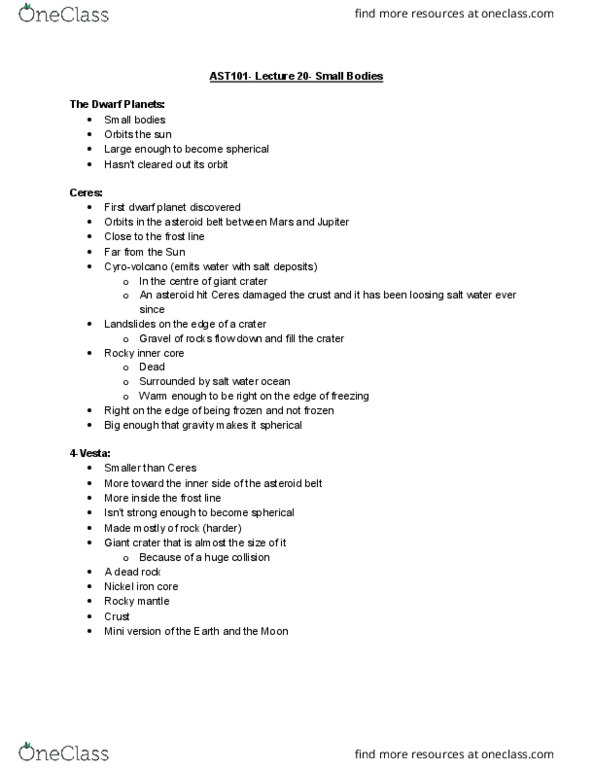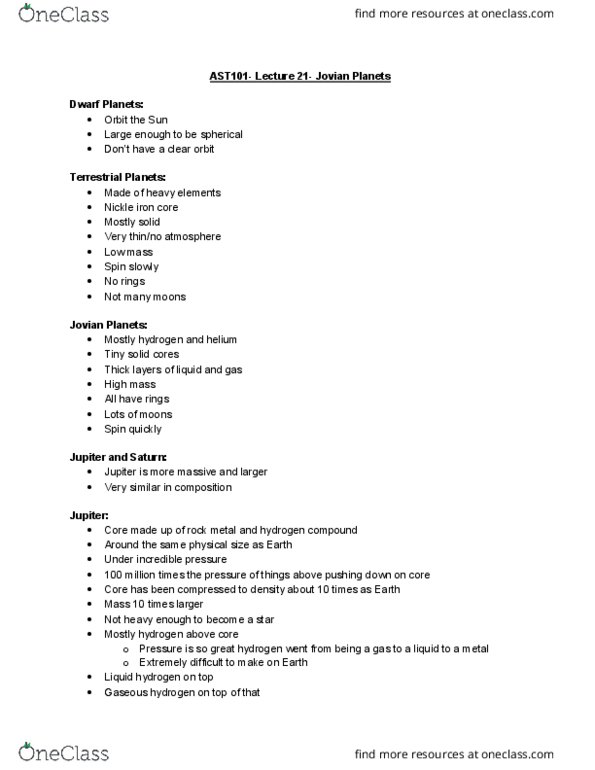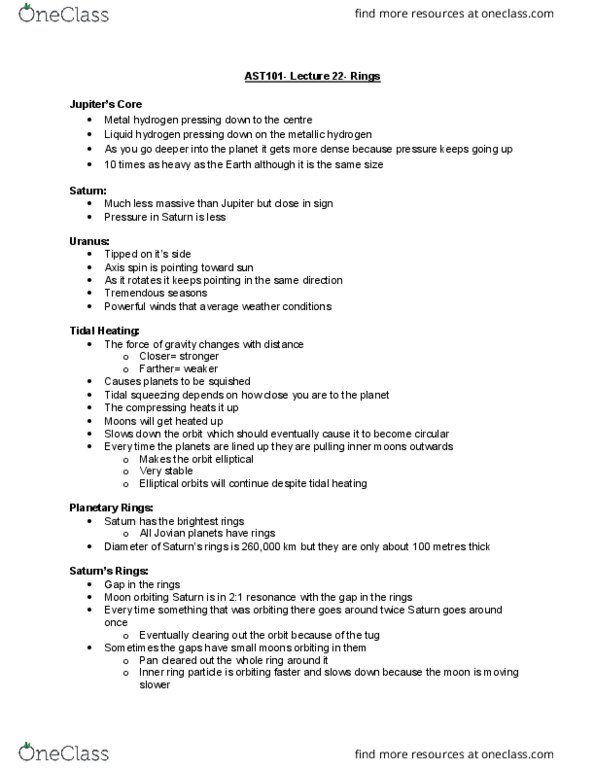AST101H1 Lecture Notes - Lecture 21: Liquid Hydrogen, Earth Mass, Low Mass
AST101H1 verified notes
21/26View all
Document Summary
Dwarf planets: orbit the sun, large enough to be spherical, don"t have a clear orbit. Terrestrial planets: made of heavy elements, nickle iron core, mostly solid, very thin/no atmosphere, low mass, spin slowly, no rings, not many moons. Jovian planets: mostly hydrogen and helium, tiny solid cores, thick layers of liquid and gas, high mass, all have rings, lots of moons, spin quickly. Jupiter and saturn: jupiter is more massive and larger, very similar in composition. Saturn: thicker gas layer than jupiter, much less massive than jupiter, smaller than jupiter, much less dense, thicker atmosphere than jupiter. Uranus and neptune: also have gas and hydrogen layer, water and ammonia inside, mass of neptune wasn"t large enough to keep as much hydrogen, rocky core in the centre, smaller, lower mass than jupiter and saturn. Why did io keep it"s elliptical orbit: orbital resonance, 1:2:4 resonance, when io goes around 4 times europa goes around twice and gynamede goes around once.




